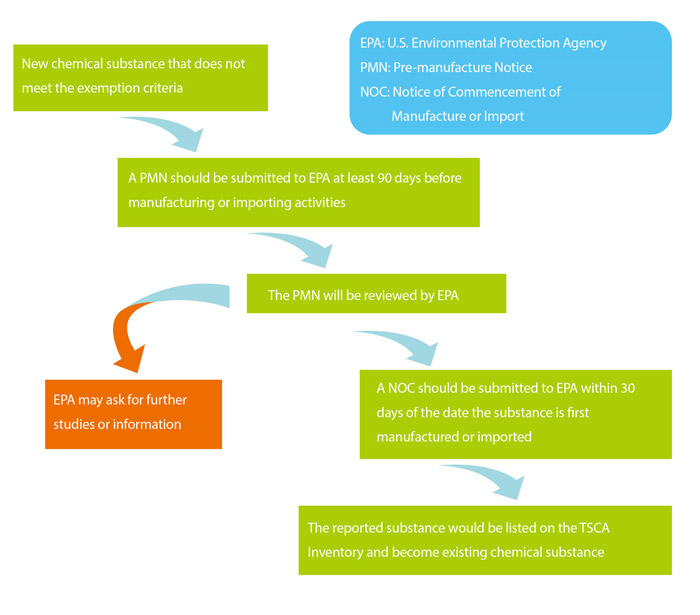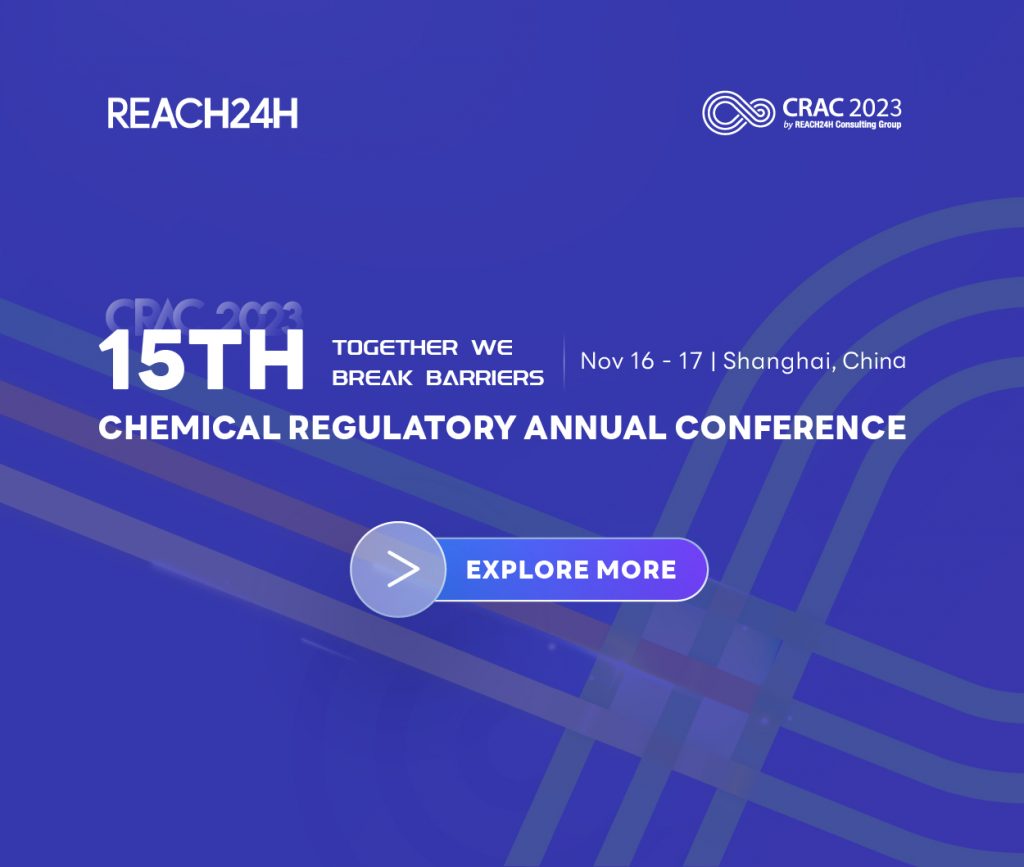U.S. TSCA
Overview
Toxic Substances Control Act (TSCA) was firstly enacted in 1976. It is the Nation’s primary chemical management law and provides The U.S. Environmental Protection Agency (EPA) with the authority to require reporting, record-keeping, and testing requirements and restrictions relating to chemical substances and mixtures. In June 2016, President Obama signed into law the Frank R. Lautenberg Chemical Safety for the 21st Century Act (the Lautenberg Act) to amend the TSCA of 1976. The new law will strengthen EPA’s authority to manage existing and new chemical substances in commerce.
U.S. TSCA Requirements
Toxic Substances Control Act (TSCA) classifies chemical substances into existing substances and new substances by the U.S. TSCA Inventory (the Inventory). For purposes of regulation under U.S. TSCA, if a chemical is on the Inventory, the substance is considered an existing chemical substance in U.S. commerce. Any chemical that is not on the Inventory is considered a new chemical substance. A new substance will become an existing substance after EPA’s review, so the U.S. TSCA Inventory continues to grow, and now lists about 86,000 chemicals. The Lautenberg Act will significantly change the abilities of the EPA to evaluate both existing chemicals and new chemicals.

Obligations of Existing Chemical Substances
For the existing chemical substances listed on the U.S. TSCA Inventory, the manufacturers/ importers are requested to check if there is any Import Certification Requirement (Certification), Chemical Data Reporting Rule (CDR) for their product and if meet the Active-Inactive rule.
| Import
Certification Requirement (Certification) |
Imports of chemical substances, mixtures or articles that contain a chemical substance or mixture must comply with the Toxic Substances Control Act in order to enter the U.S. market. Importers must certify that imported chemical substances either comply with U.S. TSCA (positive certification) or are not subject to U.S. TSCA (negative certification). Certain chemicals require no certification. |
| Significant
New Use Rule (SNUR) |
Once EPA determines that a use of a chemical substance is a significant new use, the manufacturers/ importers should submit a Significant New Use Notice (SNUN) to EPA at least 90 days before they manufacture (including import), or process the chemical substance for that use. |
| Chemical Data
Reporting Rule (CDR) |
Manufacturers (including importers) are required to report if they meet certain production volume thresholds, generally 25,000 lbs or more of a chemical substance at any single site. However, a reduced reporting threshold (2,500 lb) now applies to chemical substances subject to certain U.S. TSCA actions. The most current reporting period is between 2016.6.1~2016.9.30. |
| Chemical Data Reporting Rule(CDR) | Manufacturers (including importers) are required to report if they meet certain production volume thresholds, generally 25,000 lbs or more of a chemical substance at any single site. However, a reduced reporting threshold (2500 lb) now applies to chemical substances subject to certain U.S. TSCA actions. The next reporting date is 2020. |
Obligations of New Chemical Substances
For new chemical substances not listed on the U.S. TSCA Inventory, a Pre-manufacture Notice (PMN) should be submitted to EPA at least 90 days before manufacturing (including importing) the substance for a non-exempt commercial purpose.
How to Comply with U.S. TSCA?
For chemical companies doing business in the U.S., U.S. TSCA compliance is a prerequisite for the chemical products to enter into the market. The following questions can help determine the compliance strategy under U.S. TSCA:
- Is the substance subject to U.S. TSCA?
- Is the substance an existing chemical substance or a new chemical substance?
- For an existing substance, does the volume reach the CDR threshold?
- Could a U.S. TSCA certification be issued when importing an existing substance?
- Is there any other rule or order needed to be addressed for an existing substance?
- Does the new substance meet the exemption criteria?
Our Services
• U.S. TSCA Compliance Analysis Report
• Positive/ Negative Certification Statement
• Bona Fide Intent Notice
• Pre-manufacture Exemption (LVE, TME, LoREX, Polymer Exemption, etc.)
• Chemical Data Reporting (CDR)
• Significant New Use Notification (SNUN)
• Pre-manufacture Notification (PMN)
• Notice of Commencement (NOC)
• Notice of Activity (NOA Form B)



